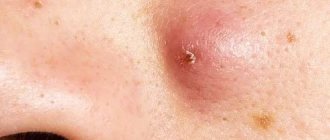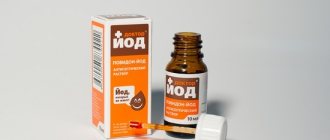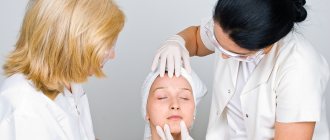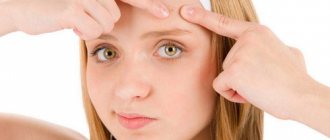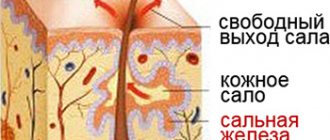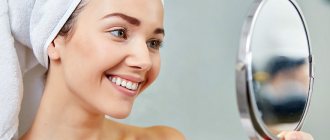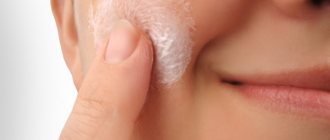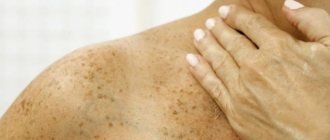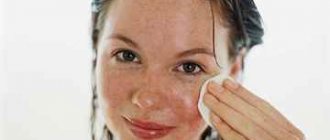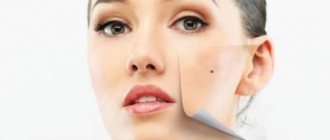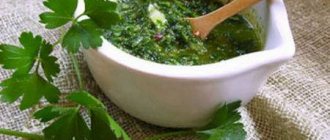Varieties
The spots can be different in shape and size. They differ in the intensity of the color, as well as the presence of peeling. At the moment, about 30 types of skin rashes are known and 6 of them fit the description.
- Hemorrhage. This spot is caused by subcutaneous hemorrhage. The color can be not only red, but, depending on age, acquire a blue, green, yellow or gray tint.
- Spot. In diameter, its size ranges from 5 to 20 mm. It does not protrude above the surface of the skin and disappears when pressed.
- Papule. This formation has a diameter from 1 to 20 mm. Rising above the surface. The structure is dome-shaped.
- Roseola on the face. This formation is pale pink in color, its diameter is 1-2 mm. The shape is round and does not stick out from the skin.
- Tubercle. Has an inflammatory infiltrate. The structure is dense, there are no internal cavities. Diameter up to 2 mm.
- Erythema. What is this? Quite large areas of redness. Their color can vary from red to purple.
In reality, two or more types of rash may merge on the face at once. This makes it difficult to diagnose the problem quickly and choose the right effective treatment.
Causes of pigmentation
The appearance of spots on the face occurs as a result of exposure to coloring pigment cells. With disorders, skin color changes in one direction or another.
The color pigment depends on a person's genetic makeup, which includes different combinations of brown, yellow, red and blue coloring cells.
The brown pigment melanin determines the color of human skin and prevents the harmful effects of ultraviolet radiation on it. Increased pigmentation is often observed due to excessive tanning.
If you have fair skin, severe pigmentation is more noticeable. They can appear in the form of spots, freckles and moles on the face. If melanin lies deep in the skin, the spots look especially bright; if closer to the surface, they have a pale brown tint.
Doctors distinguish between internal and external causes of the problem.
Internal include:
- Lack of vitamins. Vitamin B12 deficiency provokes darkening of the skin. It regulates pigment synthesis, thereby preventing the formation of new age spots. Vitamin A fades dark shades. Vitamin E in sufficient quantities reduces the risk of skin damage resulting from intense exposure to sunlight.
- Poor blood circulation. In case of stagnation, the blood is not able to completely free itself from toxins and breakdown products. They appear on the skin in the form of age spots.
- Gallbladder dysfunction. If the liver is not provided with the necessary enzymes, cholesterol is formed, which clogs the blood vessels, and lipid metabolism is disrupted. As a result, pigmentation appears on the face.
- Intestinal slagging. Improper functioning of this organ interferes with metabolic processes in the body, resulting in darkening of the skin.
- Diseases of the cardiovascular and nervous systems, especially over the age of 40.
- Hormonal imbalance in the body during pregnancy and childbirth, gynecological diseases and thyroid problems.
- Kidney diseases. The appearance of yellowish-brown pigment spots often indicates problems with kidney function.
- Long-term use of certain medications. As a result of this treatment, the skin may acquire a dark tint in places.
- Stress. If you are in a stressful state for a long period, then you may encounter the appearance of pigmentation. In such a situation, you need to normalize your psychological state.
The reasons for the appearance of spots can be determined by their appearance. Reddish-colored formations occur if the intestines are not functioning well. Brown pigment spots on the face often indicate liver and gallbladder disease.
External reasons
External reasons include:
- Active sun rays. They not only cause burns, but also stimulate excessive melanin synthesis in the deep layers of the skin. The body can react in a similar way to visiting a solarium. Pigmentation is especially noticeable in the spring, because after winter frosts the skin loses melanin, and intense exposure to ultraviolet radiation produces pigment unevenly.
- The appearance of acne. When squeezing out pustules and applying a thick layer of camouflage makeup, there is a risk of residual effects in the form of scars and spots.
- Age-related pigmentation. After reaching the age of forty and fifty years, many women develop large brown spots on their face and arms. This is clearly visible when looking at photos of women before and after 50 years. They are not dangerous in themselves, but they spoil the appearance. This phenomenon can only be treated with the help of cosmetology achievements.
- Allergies to cosmetics or food. If you do not get rid of inflammation, peeling and rashes in time, dark marks can remain for a long time.
There are many types of pigmentation on the face. In order to eliminate this problem as effectively as possible, it is necessary to initially establish exactly the causes of its occurrence.
In this case, it is best to contact an experienced cosmetologist who will make the correct diagnosis and prescribe adequate treatment.
Freckles. Miniature yellowish darkening, which becomes more pronounced when exposed to sunlight. With age, their number usually decreases. Cosmetologists recommend using sunscreen to protect yourself from the appearance of new freckles.
Chloasma. Pigment formations that appear against the background of changes in hormonal levels due to pregnancy, gynecological diseases, dysfunction of the endocrine system, usually in adults, which requires treatment.
Birthmark. This is a miniature benign neoplasm. If desired, it can be removed by laser or cryotherapy.
Lentigo. Dark brown spots that appear on the face due to ultraviolet radiation. Usually found in old age.
Vitiligo. These are white spots that occur due to a disruption in the formation of melanin. The tendency to the disease is hereditary.
Red spots on the body after a shower: why do they appear, how to treat them?
The appearance of redness on the body and face after taking a bath or shower may indicate various health problems and poor functioning of internal organs. Most of the diseases known to us are manifested by a rash and changes in the skin. Let's consider further what causes red spots to appear on the face after a shower, and how to treat them.
Why are there red spots on the body after drinking water?
There can be many reasons for the appearance of unpleasant redness on the body or face. The most harmless are external irritants. It could be hard or too hot water.
Reacting to such factors, the skin will become covered with red spots, which will be irritation and nothing more. Another reason may be the use of scrubbing products and an abrasive body washcloth.
Red spots in this case will be evidence of micro trauma to the skin.
Next, you can consider more serious reasons for the appearance of spots on the body. One of them is emotional overexcitation and a nervous state.
Dermatological diseases can also appear as spots on the body after contact with water. One of these diseases is pityriasis versicolor. This is a mild form of the disease that may not manifest itself for a long time, and all symptoms will be reduced to spots on the body after a shower.
To summarize, we can highlight the following reasons for the appearance of red spots on the body after drinking water:
- External irritants: water, hygiene products, washcloths.
- Allergic reactions to the composition of water.
- Dermatological diseases.
- Nervous system disorders.
- What do spots on the skin look like after water?
The spots that appear after external irritants have an uneven shape and blurred edges. They will look like small redness in different areas of the skin. Those spots that indicate ringworm or allergies look like small scaly bumps. If the spot appears due to allergies or other dermatological abnormalities, it will itch.
Aquagenic allergy
Why does my body still itch after a shower? Often this phenomenon indicates an aquagenic allergy. A very rare pathology, skin rashes are added to the itching. The nature of the phenomenon is unclear. But there is an assumption that this is due to the production of histamine during a cholinergic reaction.
People suffering from this disorder are very careful with water. Since interaction with her, especially long-term, is fraught with unpleasant consequences.
How to remove water stains on the body?
Of course, it is better not to try to diagnose yourself, much less cure it. If spots on the body appear due to external irritants, they will go away on their own. Typically, such irritation goes away within a few hours after contact with water.
But this skin reaction should not be ignored. Maybe you should replace your usual shower products with hypoallergenic ones, choose a soft washcloth, or filter too hard water.
Now there are many products that contain emollient components.
Such methods are no longer suitable for chronic skin reactions to water. It is better to consult a dermatologist for a detailed consultation.
He will select medications in the form of ointments and lotions based on medicinal components.
If spots on the body after water are caused by a condition of the nervous system, you should consult a neurologist so that he can prescribe sedatives depending on the patient’s specific situation.
In any case, such a signal from the body should not be ignored. It's too complicated.
But if you learn to see even the most minimal deviations, you can start treatment on time and avoid negative consequences. Red spots on the body after drinking water, this doesn’t sound scary or even serious.
But this is not always a banal allergy. An extra visit to the doctor will become self-care and insurance against unexpected illnesses.
What to do?
If, after regular water treatments, strange red spots appear on your body, you should take a closer look at your body. Doctors recommend:
- Stop using washcloths, scrubs and detergents for a while.
- Do not take too cold or hot showers, use moderate temperature water.
- If itchy red spots appear, take any antihistamine in an age-appropriate dosage.
- Do not rub your skin with a hard towel or apply various creams and lotions to it.
If red spots appear again and again, and the cause of their occurrence remains unclear, it is better not to experiment with your own health and consult a doctor - first, a regular therapist. Later, you may need the help of an allergist or dermatologist.
When and which doctor should you urgently contact?
In some cases, red spots are combined with other symptoms and signal diseases and serious conditions that require immediate intervention by a qualified doctor. Signs of a health hazard and a signal to contact a dermatologist are the appearance of the following phenomena:
- Impaired consciousness – confusion, drowsiness, fainting, etc.
- Bluish, bluish coloration of lips, skin, nails.
- Chest pain.
- Severe deterioration in attention.
- Labored breathing.
- Feeling of tightness in the chest.
- Swelling of lips, eyes, throat.
- Frequent heartbeat.
- Shortness of breath, wheezing.
- Severe nasal congestion.
- Temperature increase.
- Anaphylactic shock is a pronounced reaction to an allergen, difficulty breathing, hypoxia, drop in blood pressure, collapse, loss of consciousness.
For whatever reason, redness appears on the face, you should not rely on your knowledge and strength and try to solve the problem yourself. You need to see a dermatologist or family therapist to get an accurate diagnosis.
Without identifying the reasons, it is not recommended to apply nourishing creams or alcohol-containing tonics to the affected skin, and do not cover the spots with foundation or powder. Try to touch your skin as little as possible.
The appearance of red spots due to high temperature
First, you should figure out what stains may appear after visiting the bathhouse. If they are large and red, then most likely they arose due to the fact that the person warmed up well or took a steam bath. The fact is that in our body there are two types of capillaries: normal and reserve.
In normal conditions, blood flow at your usual ambient temperature is approximately the same level, but in a bathhouse, due to exposure to high temperature, it becomes much greater. It is for this reason that the entire skin turns very red. After a person warms up well or steams, blood also begins to flow into the reserve capillaries.
However, they are poured late, which is why red spots appear that stand out sharply on the skin.
In this situation, there is no need to panic, because after a while the body will return to normal, and not a trace will remain of the stains.
What to do if itching occurs? Prevention methods
To help cope with itching:
- Use of special cosmetics. This may include a nourishing cream or softening milk, as well as a soft body oil, which should be applied immediately after a shower to still damp skin.
- Warm baths with herbal decoction. To eliminate itching, you can add menthol, barley decoction, and juniper extract to the bath.
- Rubbing the skin. Salicylic alcohol is often used for these purposes. You can infuse peppermint on it and use it for rubbing.
- Lotions. If any part of the body itches, you can apply lotions made from burdock infusion. To prepare it you will need 400 ml of water and 1.5 tbsp. l. plant roots. The ingredients must be cooked for 30 minutes.
- Healthy drinks. For example, you can use regular dill. It must be crushed as finely as possible and placed in a glass of boiled water. You need to drink a glass of this every day for 7 days.
- Relieve nervous tension. If a person is very upset, he should definitely try to calm down and relax. In most situations, itching and tingling disappear.
Sometimes there are situations in which a person himself cannot help himself, although he knows perfectly well how to do it. In such cases, all attempts are in vain; the help of a specialist is advisable. It is he who will be able to help establish the true cause of the disease and advise how to cope with it.
List of shower gels for sensitive skin
People with very dry, sensitive skin are often recommended to use special products during showering that prevent large amounts of moisture from being removed. They carefully care for the skin and form a film on its surface that prevents the epidermis from drying out. Below we present a list of products for sensitive and atopic dermatitis-prone skin.
List of shower gels for sensitive skin:
- Elfa Pharm. Atopi Med
- Aveeno, For children, treatment of eczema
- SeSDerma Atopises Bath Gel
- Bioderma Atoderm Gentle Shower Gel
Clean body
How to help?
If your body itches after a shower, what should you do? To treat itching, you need to know exactly the cause of its occurrence.
Itching may be a reaction to hygiene products. If this is the case, then replace your cosmetics with hypoallergenic or children's cosmetics. You can try yourself as a soap maker.
If your skin is sensitive to chlorine, then you should use the most moisturizing wash products. And after a shower, lubricate your skin with some oil, for example Johnson Baby.
If your financial situation allows, you can install water filters.
To remove the manifestations of idiopathic aquagenic itching, antihistamines will be needed. For example, these could be tablets “Suprastin”, “Loratodine”, “Nixar” and others.
Source: https://TvoyKrem.ru/pryshchi/syp-posle-dusha.html
Physiological redness
A red rash on the face can sometimes be caused by physiological reasons. In this case, it is not considered a disease. To hide the defect, you can use cosmetics. In most cases, such features cannot be cured. This feature is associated with the vascular network. If it is located superficially, then the face acquires a reddish tint. In some cases, only some vessels may protrude.
It was described above, what is this - erythema? It and other described variants are considered pathological. They may indicate problems with the stomach, vascular bed, heart, and so on. Sometimes redness can be fragmentary, that is, affect only some areas of the skin, or total.
Treatment of age spots on the face
Treatment of age spots on the face will directly depend on the causes of their occurrence. If the appearance of spots is not associated with other serious diseases, then in this case special cosmetic skin whitening procedures may be prescribed.
To whiten skin with age spots on the face, use hydrogen peroxide, zinc ointment and mercury cream. These medications should be used with caution to avoid damaging the skin.
In particular, apply them exclusively to problem areas. These drugs can be used at home.
Hyperpigmentation can be treated with medications, creams, and ointments. Creams with hydroquinone have a good effect, but it is difficult to find such products now, since creams like Achromin are very toxic.
If hyperpigmentation is not an accompanying symptom, a procedure such as mesotherapy or phonophoresis may be prescribed. Such procedures stabilize melanin production and whiten the skin.
Mesotherapy is used in the initial stages of pigmentation, when the spots are small and have a light brown tint.
This includes chemical and laser peels, microdermabrasion, and phototherapy. These procedures must be carried out by an experienced cosmetologist.
Chemical peeling differs from laser peeling in that instead of laser, a combination of acids is used to prevent the formation of melanin. The disadvantage of laser peeling is that it cannot treat deep pigmentation.
The phototherapy process uses infrared rays to destroy cells with excessive melanin content.
If the problem is clearly expressed, the doctor may prescribe more serious procedures - laser resurfacing or products with trichloroacetic acid.
Here it is worth remembering that you should not be exposed to the sun for at least seven days after the procedures - your face will be red and inflamed.
Red dots on the skin after sunbathing, symptoms, causes, treatment, prevention
A rash on the body can be the result of certain infectious diseases - for example, herpes infection, chicken pox and other infections.
Many blisters appear on the skin, which then dry out and become crusty. Then the crust disappears and a spot remains at the site of the rash, which soon also disappears.
If the blisters are scratched, then as a result of infection, ulcers appear instead of a crust, and after them unsightly scars remain.
A herpetic infection can cause a rash. In this case, the blisters in the form of hyperemic spots on the body contain clear liquid and itch. Then the bubbles dry out, become crusty, or break open, forming erosion.
It is not uncommon for a rash to appear after the sea and sun. These rashes are often called solar dermatitis. Redness and swelling appear on the skin, similar to hives. rashes that arise after the sea and sun can become chronic and develop into eczema.
You should not try to treat the rash yourself. It is necessary to establish the source of the disease. Once the cause is eliminated, the skin manifestations will gradually disappear. For most people, rashes can occur as a result of allergies to food and medications.
An effective means of preventing rashes and the first method of treatment is to control your diet with a hypoallergenic diet. Because the rashes go away only if the allergen does not enter the body in the future, then if this diet is not followed, the allergy begins to manifest itself in a more pronounced form.
If the rash does not go away on its own, you can use the following remedies to relieve itching and other symptoms:
- ointment and cream based on menthol, pramoxine, camphor or diphenhydramine
- moisturizing lotions
- antihistamines such as loratadine or chlorpheniramine
If these medications do not provide any effect and the symptoms of the rash become more extensive, then you should consult a doctor.
A rash appears on stretch marks, gradually turning into red nodules measuring 2 mm. Often, dermatosis of pregnant women goes away in the first week after birth and does not affect the course of pregnancy in any way. The skin after childbirth is restored to normal.
If the rash causes you severe discomfort, then special medications that are approved for pregnant women will help. If the rash on a pregnant woman’s body is caused by hives and itches, then this itching can be treated with antihistamines.
During pregnancy, a rash can be a reaction to various substances - food, medications, and others. In this case, it appears in the form of bubbles with a clear liquid. Rashes can appear both locally and throughout the body.
A rash in pregnant women can occur due to hormonal changes in the body, as a result of allergies, infectious diseases, herpes, scabies and smallpox. A timely visit to the doctor will save the life of your fetus.
People who decide to spend their free time near a lake or river and swim in them may be in for unpleasant surprises, for which they need to be prepared. High temperatures and other factors contribute to the proliferation of pathogenic microorganisms in water bodies, leading to skin diseases. Sometimes after swimming, acne appears on the body and you need to know how to deal with it.
Beaches are often closed for swimming in hot weather in the summer, but many people ignore the established safety measures and end up with an unpleasant skin rash. A severe allergic reaction, spots and pimples on the body are not the only consequences of careless bathing.
One of the most common causes of rashes on the body after swimming is birds and the cercariae they leave in the water. If a body of water is infected with bird helminths, a person will develop red spots or small blisters with itching on the body.
The presence of infection in water leads to infection of a person, the appearance of pimples and ulcers on the skin. In such cases, antibiotics are often prescribed. It is important to seek help immediately after pimples are noticed on the body. Allergies are also a common cause of rashes.
Infection with helminth larvae leads to a skin disease, which is characterized by itching and redness of the skin. A red spot and swelling form at the site of worm penetration. After a few hours, dense pink bubbles appear on the body. There is severe itching, insomnia, and sometimes the patient’s temperature rises due to the illness.
Giardiasis
One of the most common diseases that can be contracted while swimming in ponds with stagnant water is giardiasis. Infection in water is brought by cats, dogs, rodents, and cows.
Cysts enter the water along with feces and live in it for up to 5 weeks. Giardia can disrupt the functioning of the digestive tract and cause a small rash on the body that resembles hives.
Fungal infections
Many fungi living in water can settle on human skin, nails and even internal organs. Swimming in prohibited areas can easily cause mycosis. If the rash on the body is accompanied by peeling, itching, and cracks, most likely a fungus has entered the body. The carriers of infection are people, birds, and rodents.
We suggest you read: The inside of the nose hurts: possible diseases
Rashes and severe itching when infected with worm larvae can be relieved with menthol ointment. Red bubbles can be washed with soda solution if there are no medications nearby. The Vietnamese balm “Star” also copes well with itching. A patient with cercariasis should be seen by a doctor.
At high temperatures, antipyretics are taken, and if a runny nose appears simultaneously with an allergy or infectious process, vasoconstrictor drugs are instilled.
First of all, you need to consult a dermatologist who will find the cause of the skin rashes. Acne may be the result of an allergic reaction of the body, in which case you will need to be examined by an allergist.
In summer, you especially want to hide from the heat in cool water, but before swimming in fresh water or a lake, you need to carefully study the safety rules and weigh all the risks.
An increase in air temperature causes the proliferation of pathogenic microorganisms in water, which can cause many skin problems and infectious diseases. Swimming in clean water can strengthen the immune system and have a positive effect on the nervous system, so you should not deprive yourself of such pleasure.
If there is a lot of vegetation and birds swimming in a lake with clear water, it is still better to refrain from water procedures, because cercariae may be waiting for a person.
You should immediately contact a doctor in the following cases:
- an increase in temperature immediately after visiting a pond or for several days;
- nausea and vomiting;
- diarrhea;
- red pimples or spots on the body accompanied by itching;
- ear pain;
- redness and inflammation of the eyes.
Of course, you need to swim only in clean ponds, where you are allowed to plunge into the water without risk to health. As a rule, in polluted and dangerous water bodies a special warning sign is placed for humans. To avoid getting infected when swimming in unknown bodies of water, you should follow simple rules:
- do not swim in water with ducks and other waterfowl;
- feed birds only outside the reservoir so that they do not remain in the water and spread helminths;
- lubricate the skin with oil or a special repellent cream;
- do not enter a lake or river with dirty or colored water;
- It is better to choose rubber slippers to protect yourself from cuts and injuries;
- cuts and scratches are a contraindication to swimming in closed waters.
It is not recommended to swim in places where there are ducks, as well as other birds that are fed by people. To protect against cercariae, repellents are applied to the body, the effect of which lasts for 1 or 2 hours.
To prevent the appearance of red spots on the skin after swimming, you need to use a water temperature that is acceptable for your epidermis. When choosing cosmetic products, you should also choose washes that are ideal for your skin type.
If the spots are caused by an allergy to components of cosmetics, you should prefer antiallergic cosmetics. In public showers, it is better to wash in rubber slippers, and under no circumstances use other people’s towels.
Reddish stains after a shower are common. If they appear and are accompanied by itching and peeling, you should definitely see a doctor to find out the cause of the redness.
Psychological reasons
Considering what causes red spots on the face, we can also identify psychological reasons. Both women and men are susceptible to this problem. Most often, stressful situations are considered a provoking factor. This problem is considered quite popular.
When the sympathetic nervous system is excited, the vascular network becomes very noticeable. At the same time, the capillaries increase and expand, and blood flow increases. As a result, irregularly shaped spots appear on the face.
Main reasons
Red spots may appear for reasons such as:
- long exposure to ultraviolet rays;
- hot water;
- stress, nervousness;
- physical stress;
- lack of vitamins;
- acne;
- seborrhea.
After taking a shower, redness may appear for the following reasons:
- water too hot;
- water contrast;
- hardness of water;
- rubbing the skin with a hard washcloth;
- irritation from used detergents;
- cosmetic scrubs.
Infectious and inflammatory problems
Often the rash is caused by infectious problems. These include a large number of diseases, but let’s look at the most common ones.
- Lichen. The rashes have a bubbly structure. This rash does not transform into another type of rash.
- Sycosis. The appearance of redness in the area of the stubble.
- Pyoderma. Red spots that are filled with purulent contents. Look like bumps.
- Erysipelas. This inflammation is most often localized on the cheeks, near the nose, and in the corners of the mouth. In this case, the spots often merge and protrude above the skin.
- Furunculosis. Volumetric education. Rising above the skin.
Some doctors are able to include psoriasis in this list. However, this is incorrect, since this problem does not develop due to an infectious pathogen.
Is there anything else that causes red spots on the face? Provoking factors include heart problems. This is directly related to the condition of the blood vessels. Atherosclerosis may occur. Due to the plaque, blood flow is disrupted and the vessels are stretched. The spots are of irregular shape. If the stretching is strong, then the vessel itself may be noticeable.
Another reason should be noted the lack of the required amount of magnesium in the body. This leads to heart problems.
Nervous system disorders
Stress, nervousness, an unfavorable emotional environment at home or at work - all this can be reflected in red spots on the body. In this case, the bath serves as a kind of accelerator that brings out all your experiences.
- Recommendations:
- Analyze the situation, perhaps you will find a certain pattern.
- You can drink herbal soothing infusions yourself. Spend more time outdoors and relax.
- If you feel that you cannot cope on your own, consult a doctor. Sometimes stress is of a deeper nature, then it is advisable to undergo a course of drug therapy.
Contraindications
All cosmetic procedures aimed at getting rid of age spots have their own contraindications and side effects. You may be refused entry to the salon in certain cases.
CONTRAINDICATIONS
- taking glucocorticosteroid hormones;
- diabetes;
- serious skin problems, such as acne.
It is also highly not recommended for pregnant and lactating women to undergo such procedures.
If spots appeared during pregnancy, you should not remove them, especially with the help of chemicals. After the baby is born, the spots will gradually lighten and disappear completely.
Folk remedies for red spots on the face
Often, along with drug treatment, people also use folk remedies. You should first consult with your doctor so as not to make a mistake in choosing compresses and masks. Often young girls come to this type of treatment because they suffer from allergies on their facial skin after using dangerous cosmetics.
There are many folk methods with which you can lighten age spots a little.
All folk remedies will help only if the age spots are flat and do not rise above the skin (moles).
Traditional recipes are an excellent remedy for combating chloasma or freckles, but still, before using them, it is recommended to consult a dermatologist.
• Starch and lemon juice are good for getting rid of age spots. To prepare the mixture you will need freshly squeezed lemon juice and starch. Mix to form a creamy paste and apply to problem areas. Wash off after 20-30 minutes.
• Fresh juice of parsley, cucumber, lemon or orange is also good for whitening. Just apply the above juices (one, not several at once!) to problem areas, rinse with water.
• You can prepare an anti-stain gel. For this you need fresh parsley. Grind it and add a small amount of water. Place on the fire and wait until it boils. Pour the mixture into a separate bowl. Can be stored in the refrigerator for several days.
• White clay is an excellent remedy. Mix it with lemon juice or a small amount of hydrogen peroxide. It should be a porridge-like mixture. Apply it to problem areas several times a day.
• Pepper mask will not only brighten your face, but also make your skin more delicate. Grind one sweet pepper thoroughly; you can add honey or lemon juice to the pulp. Apply the resulting mixture to problem areas for 20 minutes.
• Take the egg white, add a pinch of salt, beat. Add a little white clay to the mixture to make a homogeneous mass, not liquid and not too thick. Use several times a day.
• A mask with lemon and horseradish is very effective, but it is recommended to apply it for no more than 10 minutes. Be careful not to get the mixture into your eyes! To prepare, take horseradish root, grind it using a grater or blender, add the juice of half a lemon. You can add a spoonful of honey, previously melted in a water bath.
• Yeast mask - easy to prepare. For it you will need 25 grams of fresh yeast, a little lemon juice and full-fat milk. Mix everything until smooth and gently apply to the skin.
• Cottage cheese is also an affordable and proven remedy against hyperpigmentation. To prepare the mask, take a little cottage cheese, 200 grams will be enough, add ten drops of hydrogen peroxide and the same amount of ammonia to it. Use daily, each time you need to prepare a new portion.
• For bleaching, you can use kefir, as well as any other fermented milk products.
There are a huge number of mask recipes; you can individually choose one or another composition. The main products that are used for treatment are quite simple and accessible to everyone - cucumbers, fresh cabbage, various berries, yeast, hydrogen peroxide.
The most effective ingredients are considered to be cucumbers, parsley, lemon juice and honey. When preparing masks, focus on these ingredients.
Be especially careful with honey. It is recommended to apply a mask with this composition for the first time on the bend of the elbow.
Folk recipes for homemade masks will tell you how to quickly remove red spots on your face using products that you always have on hand. They can be done for 7-10 minutes every other day. If these are applications or lotions - daily.
Cucumber mask
Mix cucumber puree (50 g) with white clay (20 g), diluted to the desired consistency with a decoction of chamomile. It turns out to be a very effective mask for red spots on the face, regardless of the reasons for their appearance.
Honey mask
Mix 50 ml of honey with the yolk, add 2 drops each of orange and juniper essential oils.
Sour cream mask
Mix 20 grams of the fattest sour cream with raw, finely grated potatoes (50 grams). Add 5 drops of tangerine essential oil.
Oatmeal mask
You can eliminate red spots with a nourishing whitening mask. Mix 20 grams of oatmeal with 10 ml of lemon juice diluted with water.
Algae mask
If red spots do not go away for a long time, treat the skin with algae and clay. Leave the kelp to swell in water, squeeze out and mix in equal proportions with green or black cosmetic clay.
Mix 10 grams of full-fat sour cream, honey, lemon juice diluted with water, and olive oil. Add 5 drops of either vitamin A or E (or 2 drops of both).
Chamomile mask
Try removing dry red spots on your face with a mask of baby cream (30 g), chamomile infusion (a few drops), olive oil (10 ml). This remedy can even be used to treat children.
Parsley mask
Pour a glass of boiling water over chopped parsley leaves (20 g). Leave for an hour. Strain and use the greens for the mask, mixing it with sour cream in equal proportions. And the resulting infusion can be poured into molds for making cosmetic ice. This recipe will help those who have red spots on their face that are flaky and itchy.
Clay mask
The following mask will deal with red pigment spots on the face. Dilute white clay with warm chamomile infusion until the desired consistency is obtained. Add some lemon pulp and olive oil. This mask will also cope with the problem of rashes and acne.
Garlic tincture
Garlic tincture lotions effectively deal with red spots on the face, but they are contraindicated for treating sensitive, thin skin. Pour chopped garlic cloves with alcohol in a ratio of 1 to 2. Leave in a dark place for a week. Lubricate problem areas daily.
Mix birch buds, linden blossom, and calendula in equal quantities. Pour 50 grams of the mixture into 500 ml of hot water, boil for 15 minutes, cool, strain, and make daily lotions.
Treatment
Treatment for reddish spots on the skin after a shower completely depends on what caused this illness. If the problem is in the blood vessels, then medications are prescribed to narrow them. If you have a fungal infection of the skin, you need to take antifungal medications. Treatment is usually carried out in a complex way using several types of medications.
If the cause of pink spots after taking a bath or shower is low-quality cosmetic wash products, then you need to stop using them and choose other products.
Traditional methods
You can fight red spots on your skin after a shower using alternative medicine. There are many home recipes that normalize the condition of capillaries under the skin, soften the epidermis and relieve dryness.
To eliminate red spots and peeling, the following recipe works well: pour 3 tablespoons of pre-chopped parsley with half a glass of boiling water and let it brew for 30 minutes. Then add sour cream in such an amount that a thick mass is formed, and make a mask for 15 minutes.
An effective folk remedy is the following recipe: 3 tablespoons of cottage cheese are mixed with a small spoon of honey, a little lemon juice is added and applied to the skin, holding for 15-20 minutes. This mask should not be used for people suffering from an allergic reaction to honey.
We suggest you familiarize yourself with: The skin on the scalp is flaky and itchy redness
Possible consequences and complications
Ignoring skin problems often makes the situation worse. Small spots may increase in size and spread over the entire face. They may also appear on the scalp and body.
Severe inflammation is likely to appear, followed by abscesses, ulcers, cracks and severe peeling. This may result in scarring. To avoid unpleasant consequences, you need to take timely measures. If self-treatment does not give a positive result, you should consult a doctor.
Red skin on the face is often the result of autoimmune processes. Psoriasis may also be the cause. It often progresses due to stress or genetic factors. The problem manifests itself in the form of flaky spots. They can appear on the face, elbows, knees, and armpits. If the disease progresses, plaques can cover the entire body of the patient.
In addition, psoriasis often manifests itself through periods of remission and relapse. Plaques protrude above the skin, and blood dew syndrome appears. The legs take on the appearance as if they had been poked with a needle.
What can the doctor say?
Why do my eyes turn red after swimming or showering? What caused the bursting of eye vessels after training? These and other questions regarding eye health are often asked to doctors. The first thing that needs to be confirmed or excluded is the following diseases:
- Conjunctivitis is an inflammation of the mucous membrane of the eye caused by adenoviruses or bacteria, which can be allergic in nature.
- Blepharitis is an infectious inflammation of the eyelash follicles caused by bacteria. Most often, the causative agent is Staphylococcus aureus, but a lack of vitamins, anemia, diseases of the nasopharynx, digestive tract, and teeth increases the risk.
- Corneal ulcer is damage to the cornea caused by dust, dirt or a foreign object.
- Glaucoma is an increase in intraocular pressure, which leads to vision defects.
- Uveitis is an inflammation of the choroid of the eye. A very serious disease that can cause complete blindness, so timely contact with a specialist is very important.
We suggest you familiarize yourself with Retinitis of the eye, causes and diagnosis.
When dust, sand or a foreign object gets into your eyes, the first instinctive action is to rub your eyes with your hand. This often leads to irritation or infection. Eye trauma and allergies also cause redness.
Many people use contact lenses, but not everyone knows that wearing lenses for longer than necessary leads to unpleasant consequences.
A simple therapist will tell you that the flu or a mild cold begins with a stuffy nose and red eyes. And sometimes after sleep a similar “surprise” is visible in the mirror.
Computer red eyes are a familiar consequence of spending long periods of time in front of a screen.
Post-workout redness occurs due to too intense and frequent physical activity. And an unhealthy lifestyle, accompanied by large portions of alcohol, leads to the same symptoms.
Preventive measures
Diagnosis is carried out by collecting an anamnesis, analyzing his complaints and visually examining an adult with a red spot on the cheek or other area of the face. Most often, this is enough to make a diagnosis. If there is a suspicion that the rash is infectious, a scraping is taken. In cases where everything is fine with the skin and no problems were identified during the diagnosis, examinations of the heart, liver, kidneys, gastrointestinal tract, and so on are prescribed.
Even after bleaching your face in a salon, there may be a risk of relapse. To prevent this from happening, it is necessary to take simple preventive measures:
- Try to avoid exposure to the sun. If you go to the beach or any other sunny place, be sure to wear a wide-brimmed hat and use sunscreen. It is recommended to do cosmetic procedures in autumn or winter; at the same time you need to take tyrosinase blockers.
- After the whitening procedure, you must regularly use a cream with protection of at least 15. The cream must be applied evenly and at least 20 minutes before going outside. At the same time, do not forget that it is necessary to renew the layer of cream every 4-5 hours, while removing the remnants of the old one.
- To prevent relapse, it is recommended to wipe your face with cucumber or parsley juice every morning and evening. You can make special ice cubes and wipe your face with them.
People who take care of their health are less susceptible to the appearance of red spots. Therefore, following simple preventive rules will reduce the risk of redness:
- proper nutrition;
- to give up smoking;
- moderate alcohol consumption or abstinence;
- use of cosmetics suitable for your skin type;
- periodic rest from decorative cosmetics, and especially from foundations;
- conducting an allergen test to avoid contact with irritants;
- walks in the open air;
- physical activity for health reasons;
- compliance with specialist recommendations.
How the body reacts
Since this type of nerve cells is responsible for the functioning of the blood vessels of internal organs such as the pancreas, sebaceous and sweat glands.
Due to the impact of irritating factors on the autonomic nervous system, the skin becomes pale, blood vessels narrow, or, conversely, capillaries dilate, causing the surface of the face to turn red.
Treatment
The situation is quite uncomfortable. If flaking is not treated immediately, it can spread further throughout the body.
Regularly appearing flaky redness indicates serious health problems (with the liver and gall bladder).
Prevention
After taking various hygiene procedures (bath, shower), many people of different ages develop red spots on the skin, most often they occur after a shower, warm or hot.
The reasons for the appearance of these spots can be found in many ways:
- different pressure force when rubbing the body with a washcloth
- use of various skin irritating detergents
- “hard” tap water
- shower water is too hot or cold
- taking a contrast shower
- application and use of scrubs and other cosmetics for face and body skin care
We suggest you familiarize yourself with how long it takes for thrush to appear after infection.
You only need to remember one thing, that in the human body there are 3 types of nervous system:
- central
- peripheral
- vegetative
The autonomic nervous system is responsible for the functioning of internal organs, which include blood vessels, endocrine and exocrine glands (pancreas, sweat, sebaceous glands of the skin).
Most often, the appearance of red spots after a gentle, hygienic warm shower is due to dyssynergy in the work of 2 main parts of the autonomic nervous system:
- sympathetic (constricts blood vessels and causes pale skin)
- parasympathetic (dilates blood vessels and causes redness of the skin)
The uneven redness of the skin in the form of spots after a shower indicates an imbalance in the functioning of the vegetative system, but sometimes, with various skin and sexually transmitted diseases, these spots can be significant in making the correct diagnosis.
For example, skin diseases such as:
- pityriasis versicolor
- pityriasis rosea
- systemic lupus erythematosus
- local scleroderma
- psoriasis
- seborrheic dermatitis
- pyoderma
- sycosis
- various types of lichen planus can manifest themselves in the form of a local increase in the number of red spots after taking a warm or hot shower, which attract attention and do not go away for quite a long time (from several minutes to several hours).
For diseases such as:
- secondary syphilis (treatment of secondary syphilis)
- acne
- squamous cell skin cancer
- squamous cell carcinoma of the glans penis
- squamous cell carcinoma of the shaft of the penis and skin of the scrotum
- fungal infections of the skin between the fingers and groin areas will certainly cause increased red-spotted rashes after hygiene procedures, after a warm or hot shower, which requires immediate contact with a specialist and obtaining qualified advice.
The slightest changes in the skin are a signal that something is wrong, or that a person is being negatively influenced from the outside.
If large red spots appear on the body after water procedures, then it can be assumed that a serious disease is developing.
A shower or bath can provoke a skin reaction, but there may not be any pathologies.
Possible consequences and complications
Red spots often appear on the face after sleep.
When coming into contact with a substance that causes an allergy, similar problems may occur.
When a person spends a long time in a place where the temperature is elevated, hyperemia occurs due to excessive dilation of blood vessels.
Washing or rubbing your face with great intensity also provokes irritation in the form of redness.
Such conditions do not require urgent intervention. If we are talking about an allergic reaction, then you need to take antihistamines. In other cases, hyperemia goes away on its own after the cause is eliminated.
How to deal with red eyes?
In order to answer this question, you must first determine the cause of the redness, and then treat the effect. As a rule, the problem can be solved on your own. A distinction is made between external irritants and diseases.
External irritants include lack of sleep, drinking alcohol, spending long periods of time near a computer or TV, using contact lenses while sleeping, or wearing expired lenses. Such irritants also include exposure to tobacco smoke, dust, frost, wind, cosmetics, and too dry air. These causes are easy to eliminate, and the alarming symptoms disappear after a short time.
We suggest you read: Is there a blind spot in the eye?
To speed up the process, apply a cold compress with an ice cube in a clean cloth. If the cause is cosmetics, simply get rid of expired or allergy-causing products.
Are red eyes common after watching TV? This means the time spent watching TV programs is reduced. It is also necessary to reduce the time spent sitting at the computer and increase sleep time.
In case of allergies of unknown origin, allergy tests are performed.
If symptoms of the disease appear (tearing, itching, burning, discharge from the eyes, inflammation), you should immediately consult an ophthalmologist. And the sooner qualified assistance is provided and treatment is carried out, the sooner a clear look will sparkle in the mirror instead of red eyes.
Expert opinion
Elsa Borodina
plastic surgeon
Mesotherapy is often used to eliminate pigmentation. For this purpose, the drug Gluta-1200 (glutamine) is used. You can make cocktails with vitamin C, since ascorbic acid causes bright skin whitening. DMAE and hyaluronic acid also have a slight whitening effect.
Irina Dorofeeva
practicing cosmetologist
If pigmentation appears, you should initially go to a dermatologist.
An examination by an endocrinologist, gynecologist, or gastroenterologist may be necessary. If the occurrence of age spots is not associated with any disease, then a cosmetologist can help. Particularly effective procedures are mesotherapy, chemical peeling, and fractional treatment. In the future, people prone to pigmentation should use sunscreen, and after a while they will need to undergo a second cosmetic procedure. Remember that the problem can be prevented rather than having to deal with it for a long time. If you are prone to the appearance of age spots, buy good cosmetics for yourself, and do not forget about traditional methods.
Try to stay in the sun as little as possible, do not visit the solarium. It is very difficult to get rid of age spots; it is much easier to prevent their appearance.
When is facial redness considered dangerous?
A red face in an adult is considered a dangerous symptom if other signs are present. This may be anaphylactic shock or angioedema of the lungs. The first is manifested by pallor, decreased blood pressure, loss of coordination, deterioration of well-being, and the second by a blue tint to the ears or lips, hoarseness, and problems with breathing. In this case, you need to call an ambulance and give an antiallergic drug. Doctors recommend Suprastin or Zyrtec.
The risk group includes situations where spots appear on the face due to problems with the intestines, liver or heart. However, due to the fact that such a symptom is not considered indicative and objective, it is impossible to immediately identify the disease. For infectious causes, as well as psychological ones, redness of the skin does not pose any particular danger. Sometimes when drinking alcoholic beverages or rubbing the blood vessels can dilate excessively. It is not dangerous to human life.
Why do red spots appear on the face?
A red spot on the cheek of an adult who drinks alcohol is considered normal. This is due to the fact that due to the effects of alcohol, blood vessels dilate. A large amount of blood begins to flow to the skin and hyperemia occurs. This phenomenon cannot be called pathological, since it goes away on its own over time without harm to the person. If a person suffers from chronic alcoholism, then his face may be constantly red.
To accurately determine the reason why focal redness may appear in different areas of the face, you need to carefully study their characteristics: size, location, additional symptoms (whether they begin to itch or peel, whether they differ in relief), try to remember when they formed. Factors that contribute to the appearance of red areas can be divided into several groups:
- the result of using masks with locally irritating components, or procedures for eliminating blackheads, chemical peeling;
- the consequences of rosacea and other large rashes (even small acne and single boils can be included here), which, after disappearing, leave red spots that are difficult to remove with cosmetic procedures;
- allergies (including reactions to the sun, cold, etc.);
- symptom of skin diseases (allergic dermatitis, lupus, eczema, etc.);
- closely spaced blood vessels (mostly these are spots already observed on the face of a newborn baby);
- hormonal imbalances;
- lack of vitamins;
- diseases of the gastrointestinal tract;
- reaction to taking medications;
- increased blood circulation after exercise, nervous tension, pressure surge.
If, when large flat spots of a red tint appear on your face, you do not feel itching, do not experience a burning sensation and notice the problem only in the mirror, or when you touch it (due to peeling), this may be an allergic reaction. Mostly red spots on the face are formed when there is an allergy to cold or sunlight, and to eliminate them you only need to get rid of the provoking agent. However, this may be a sign of an autoimmune disease - the same symptoms (even in the photo they are similar) are used to identify lupus erythematosus.
In men
High physical activity, visiting baths and saunas, or staying in a hot climate are the most common reasons why a man's face is covered with red spots localized in the cheeks and lips. This will be accompanied by sweat, shortness of breath, and a change in body temperature. However, if after exposure to cool air and a slower pulse the symptom does not go away, the spots appear in any conditions, we can assume:
- hypertension;
- heart diseases;
- eczema.
Among women
Hormonal disruptions, even situational ones (during the menstrual cycle), become a common cause of skin rashes: small pimples, areas of peeling and redness appear on the face, which may disappear after the end of menstruation, or may remain. Mostly such spots do not itch and do not cause any particular discomfort, but if they accompany each cycle or are observed throughout pregnancy (large areas - cheeks, chin), it is worth seeing an endocrinologist.
The child has
Small children (especially infants) do not have strong immunity, so every second young mother worries about allergic rashes and red spots that appear on the child’s face. They can be the body’s reactions to literally anything - among the reasons that contribute to the appearance of redness are:
- change in climatic conditions;
- new products on the menu;
- birth injuries;
- infections;
- allergy to insect bites;
- problems with the functioning of the gastrointestinal tract.
A couple of additional symptoms that accompany irritation on the face in the form of red spots are often a sign of a skin disease. Several problems can be expected:
- psoriasis;
- eczema;
- demodicosis (subcutaneous mite);
- viral type lichen;
- Rosacea.
Less commonly, redness, which is accompanied by peeling, can be attributed to a sun allergy, or, if severe itching is present, to a burn, but here a new symptom will be added - pain when touching the spot. Regarding the manifestations of skin diseases, the type of foci of redness depends on the exact diagnosis:
- In patients with pityriasis rosea, dry plaques of a bright red color with an edging appear, the diameter reaches 4 cm, but this disease affects the face less often than the body.
- With eczema, weeping spots form, which, after opening, dry out, crack, and itching occurs.
After washing
https://www.youtube.com/watch?v=EU6QYa0gI3g
In people with sensitive skin, red spots on the cheeks, chin and nose can form even after contact with tap water, which indicates its poor composition. This point is especially pronounced when changing regions. Your face may return to normal within a few hours. Separately, experts mention cases when redness occurs in response to cosmetics used when washing – here you need to look for the ingredient that triggered the allergy.
Itchy under the eyes
The formation of red spots in the area around the eyes can be explained by several factors: if women use cosmetics with a heavy composition (professional cosmetics for everyday wear), this is a reaction of sensitive skin. In both sexes, the cause may be a malfunction of the kidneys, or severe vitamin deficiency, which will cause a dry spot with a rough texture and mild itching.
Low immunity of the skin, according to experts, can be the cause of such unpleasant phenomena as red spots that form in the chin area and on the wings of the nose in the late afternoon, which are accompanied by peeling. By morning they can disappear on their own and not bother you until the next evening. If the situation does not change over several weeks or even months, the doctor may suggest chronic liver and gallbladder disease, or reduced skin immunity.
Red spots on the body after a shower: photos, why they appear and how to remove them
If the body is prone to allergies, then our skin can react to any irritant.
– Various additives in centralized hot water (Chlorine, Iron, Aluminum...); https://www..com/watch?v=upload
– Any component included in a cosmetic product (shower gel, soap, bath foam, shampoo, etc.);
– Residues of detergent on the bathroom. All cleaning products are very caustic and aggressive, and our skin often suffers from contact with them.
- Recommendations:
- If you suspect that you have an allergy, or are already 100% sure, then first of all you need to eliminate the source of irritation.
- If you don’t fully understand what the reaction is, try taking a bath and changing cosmetics every time. When a malicious bubble is discovered, read the ingredients and try to avoid similar components in the future.
- If you suspect chlorine, iron, aluminum..., conduct an experiment. Pre-boil the water and let it settle. Take a swim in this water. Then watch the reaction.
- Avoid chemicals when cleaning your bathtub. Try using baking soda to clean surfaces.
- If an allergen is identified, and for some reason you cannot eliminate it, or you have not found the source of irritation. Be sure to consult a doctor. An experienced specialist will help solve the problem.
Diagnostics
If spots appear constantly after a shower, you should immediately consult a doctor and determine the cause.
- Allergies to medications taken can also be triggered by a sharp increase in body temperature. If possible, drug treatment should be stopped to see if the redness continues. Or you can change cosmetics, pre-boil and let the bathing water stand to eliminate these causes of the problem.
- A more common cause of any rash is cosmetics that are not suitable for your skin type. Even while taking a shower, when makeup is washed off, allergies can become more widespread and visible. For treatment you only need to change cosmetic products. It's a good idea to take an allergen test to find out what may be causing your skin to break out when exposed to hot water.
- In case of increased nervousness, severe stress, spots on the skin can be eliminated if you undergo a course of sedative medication.
How the body reacts
The human body has three sections of the nervous system, each of which is responsible for the functioning of certain organs:
- central;
- vegetative;
- peripheral.
The autonomic system, in turn, reacts differently to irritation by external factors.
Since this type of nerve cells is responsible for the functioning of the blood vessels of internal organs such as the pancreas, sebaceous and sweat glands.
Due to the impact of irritating factors on the autonomic nervous system, the skin becomes pale, blood vessels narrow, or, conversely, capillaries dilate, causing the surface of the face to turn red.
The systematic appearance of spots on the face indicates improper functioning of the nervous system, which manifests itself in the form of changes in the structure of the skin.
Main reasons
Red spots may appear for reasons such as:
- long exposure to ultraviolet rays;
- hot water;
- stress, nervousness;
- physical stress;
- lack of vitamins;
- acne;
- seborrhea.
After taking a shower, redness may appear for the following reasons:
- water too hot;
- water contrast;
- hardness of water;
- rubbing the skin with a hard washcloth;
- irritation from used detergents;
- cosmetic scrubs.
Other reasons
- Skin reactions to hot water most often occur in winter.
Heating, dry air, and the contrast when leaving the room outside can cause skin cells to dry out, peeling begins, and red spots appear on the skin from prolonged exposure to hot water. - The close location of capillaries in relation to the surface layers of the epidermis is another reason for redness. Due to irritation, the vessels dilate and become more visible than usual.
- Allergic reaction.
If a person is prone to allergies, various additives in centralized hot water and the presence of chlorine can cause a rash. - Sensitive skin types may be irritated by chemicals such as shampoo, body wash, toners, and soap. Almost anything that comes into contact with the skin can be a provocateur.
Skin diseases
The body most often displays symptoms of various skin diseases, including sexually transmitted diseases, which are not always detected in the early stages. So, diseases that can cause a rash on the face after a shower:
- pityriasis versicolor;
- lupus;
- scleroderma;
- psoriasis;
- sycosis;
- seborrheic dermatitis;
- lichen planus.
Symptoms in the form of spots can last up to several hours, sometimes more. All this should force you to pay attention to the problem, identify the real cause of the disease and begin treatment.
Treatment
Once the correct diagnosis is made, the dermatologist prescribes appropriate treatment.
- Eczema and psoriasis. It is treated comprehensively with antiseptic medications and relieves itching locally.
- Allergy. Antihistamines are taken and sources of allergies are excluded.
- Adverse effects. Protecting your skin from sun, wind and extreme cold is the best medicine.
- Redness of the skin from stress. Treatment of the nervous system, soothing teas and tablets.
- Cosmetics. You need to contact a cosmetologist and choose the right facial skin care products.
- Seborrhea. It is recommended to lubricate the affected areas with products containing Ketoconazole and zinc.
- Diseases of internal organs. Treatment of an established diagnosis only after a complete examination.
Red spots that appear after a hot bath may not go away for a long time, peel and itch. This can happen constantly and last for a long time. The skin around the perimeter becomes rough and scales appear.
Source: https://xn--80ahsaqcbqq.xn--p1ai/kozha-simptomy/pyatna-na-kozhe-posle-vanny.html
Drug treatment
It is necessary to treat spots on the face only after the doctor has determined the exact cause of their occurrence. Often the rashes are atypical in nature, so diagnosing them at home can be difficult.
If the cause is psoriasis, then you can use soaps and shampoos made from tar. You need to wash your face no more than 4 times a day. Before going to bed, you should apply a moisturizer to hydrate your skin. This is a necessary measure, since tar dries out the surface greatly.
If there is inflammation or an allergic reaction, then you need to use products such as Sinaflan, Akriderm. These preparations should be applied in a small layer, without rubbing. They are used no more than 4 times a day. How many times it will have to be applied depends on the degree of damage and the clinical picture.
The ointments described contain hormones, so only a doctor can prescribe them. If the rash is infectious, then such remedies will be contraindicated. Antibacterial or antifungal agents are used, depending on the pathogen.
Allergy
Itchy, red, irregularly shaped spots on the body are the result of an allergy. Irritants may include food, alcohol, medications, plant pollen or animal hair, perfumes, hygiene products or household chemicals.
Urticaria, photodermatosis, eczema and psoriasis should be excluded. As a rule, lesions appear quickly, are characterized by intense coloring, severe itching, but disappear just as quickly - you just have to eliminate the allergen.
The chronic disease manifests itself in the form of red, dense spots accompanied by unbearable itching. The rashes appear mainly in the cold season, and disappear spontaneously in the summer. It is more common in children aged 1-7 years.
– Various additives in centralized hot water (Chlorine, Iron, Aluminum...);
– Any component included in a cosmetic product (shower gel, soap, bath foam, shampoo, etc.);
– Residues of detergent on the bathroom. All cleaning products are very caustic and aggressive, and our skin often suffers from contact with them.
- Recommendations:
- If you suspect that you have an allergy, or are already 100% sure, then first of all you need to eliminate the source of irritation.
- If you don’t fully understand what the reaction is, try taking a bath and changing cosmetics every time. When a malicious bubble is discovered, read the ingredients and try to avoid similar components in the future.
- If you suspect chlorine, iron, aluminum..., conduct an experiment. Pre-boil the water and let it settle. Take a swim in this water. Then watch the reaction.
- Avoid chemicals when cleaning your bathtub. Try using baking soda to clean surfaces.
- If an allergen is identified, and for some reason you cannot eliminate it, or you have not found the source of irritation. Be sure to consult a doctor. An experienced specialist will help solve the problem.
We invite you to familiarize yourself with Yoga for women after 40, 50, 60 years: benefits and exercises
